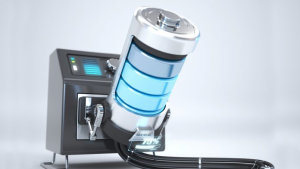Maxworld Powerwall - What is it and How does it work
Overview:
The innovative energy storage, called Maxworld Powerwall, seems to be popular. This house device minimizes the amount of power taken from the main grid. Powerpack is one of the most powerful batteries, designed for commercial and industrial use, and very popular.
What is a Maxworld Powerwall battery
The Maxworld Powerwall is made up of lithium batteries with a total storage capacity of 6.4 kWh. The battery provides enough electricity to meet the home’s energy needs at night. Energy is stored during the day by photovoltaic generators. If you need more power, you can install multiple batteries together. The Maxworld Powerwall battery delivers 9.5A current and 350-450 V. The system inverter will bring it up to 220 V, a voltage suitable for the European and Italian markets. The discharge reaches 100%, which means it can completely consume the stored energy without damaging the battery.
Therefore, the estimated 1000 life cycle, the warranty period is 10 years, the battery provides 2 kWh continuously and up to 3,3 kWh. However, to ensure a higher charge/discharge cycle, you should never run out of battery and always keep it around 80%. The more times the battery cycles, the longer the duration.
The house Maxworld Powerwall battery is equipped with a temperature control system to reduce the risk of fire, and the possibility of lithium batteries is not to be underestimated.
It has an interface directly connected to an inverter that monitors production and energy consumption. It weighs about 100 kilograms. It is 130 centimeters high, 86 centimeters wide, and only 18 centimeters deep. It can be installed internally or externally.
The battery is designed to optimize energy consumption associated with photovoltaic systems, but the battery can also be used to prevent power outages or absorb energy-consuming loads during longer charging times. In addition to the existing home model, another model was invented for the enterprise: the Powerwall.
The Maxworld Powerwall battery can be installed at the same time until the total capacity reaches 63 kWh. The only drawback is that the battery requires a compatible inverter that can be used with the battery, can work as a charging controller, and can handle various loads. Regarding its retail price, the Maxworld Powerwall seems pretty expensive, but the fact that it requires compatible inverters, even without PV, raises some doubts about its actual final price.

Lithium-ion for the Maxworld Powerwall
Maxworld Powerwall utilizes lithium-ion technology. Lithium ions have storage capacities of 110 to 160 Wh./kg. If the total weight of the Maxworld Powerwall is 100kg, excluding the case and its components, the battery itself should weigh 80Kg for a cumulative average of 120WH. per kg.
In contrast to the cheapest and most common batteries, such as lead batteries, lithium batteries provide almost all of their stored energy without damage. Instead, lead batteries must discharge an average of 50 percent to avoid damage in a short time. The 6.4 kWh battery provides up to 100% stored energy, while the lead battery provides up to 3.2 kWh. You can decide to use all the energy stored in the lead battery, but this leads to higher losses and the system cannot be used until it is recharged. Lithium-ion batteries are more expensive, but they are more efficient and durable. As a result, their impact on the environment is much smaller.

The cost of the Maxworld Powerwall storage system
In 2015, the Powerwall storage system retailed for $3,500 at home, not including installation. It may now retail for more in Europe and Italy. In addition, a power inverter is required to adjust the current to 200 V voltage, compatible with the home grid. Those who already have PV can replace the inverter. The Powerwall system (including installation) costs no less than 7,000 euros, comparable to the retail price, and the lithium storage system costs more than 6 kWh. After all, those who decide to install both Powerwall and PHOTOVOLTAIC systems can save some money by installing both systems at the same time. If the average price of an all-inclusive 3kW PV system is around €6,000, you will spend less than €12,000 by installing the storage system. However, the system is strongly recommended for high-energy users. Users with below-average power consumption should be careful about the type of system they install to avoid unnecessary expenses.
How much storage do you need to install
To find the best energy storage system for your needs, start by analyzing average energy use during F2 and F3 periods, evening and at night. With these results in mind, you can check how much storage you need. For example, if the average consumption reaches about 4 kWh, the Powerwall may represent an effective solution if installed with a PHOTOVOLTAIC system. This solution may not be convenient for users with low power consumption unless a system is required to deal with frequent power failures.
Conclusion:
Maxworld Powerwall installation is one of the best choices you can make. Feel free to inquire about Maxworld Power to get a good price.












